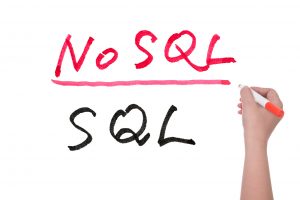Despite the obvious benefits of a holistic HIT implementation strategy, EHR implementation isn’t always easy. Getting an entire organization on board with an EHR implementation plan and finding the time and resources to execute your plan is a major undertaking.
How to Create an EHR Implementation Plan
The status of your current practice needs to be analyzed in terms of efficiency, effectiveness and organization. If your current workflow is well mapped out, the workflow on an EHR should continue that trend. Questions to be asked are computer literacy of staff, available high-speed internet access, facility readiness, and financial feasibility and practice priorities.
Planning for the EHR includes an analysis of tasks that will be started, maintained or eliminated. Looking at workflow and processes allows for the ability to modify these elements to suit electronic records, in some places cutting out steps (no need to get the chart from file room as data will be accessed on a computer), and adding steps (electronic connection to Pharmacy for transfer of prescriptions).
Planning is appropriate for the conversion of paper charts to electronic records, keeping in mind federal regulations regarding the destruction of protected patient information. Format for demographics, patient data and subsequent visits on the paper chart may be changed on the EHR to improve flow and storage of information.
5 EHR Implementation Challenges and How To Overcome Them
Before implementing EHR, healthcare providers need to consider some potential barriers in their way. Addressing the barriers from the onset of EHR implementation will help the organization set up realistic expectations and manageable goals.
Usability
Some EHR systems present usability challenges. Multiple screens, unclear navigation and too many options leave physicians and nurses frustrated or unable to process patient notes. Many practices and hospitals may not have the extra time required to learn how to work with a new system. Not understanding how to use an EHR program can have a negative impact on productivity, so overcoming usability issues is important.
Technical Ability
Computer literacy in healthcare can vary by region or age of a medical facility. For example, rural providers tend to trail behind urban providers in implementing EHRs. Connectivity can be more difficult in a rural setting, according to the Health Resources and Services Administration (HRSA) from the U.S. Department of Health and Human Services.
Older healthcare providers may also prefer paper records to learning new technology. Getting buy-in from technology-reluctant clinicians can take additional work, especially if they feel that their method is working well.
Privacy Concerns
Healthcare providers and patients alike have voiced concerns about medical privacy with EHRs. Paper records may be tedious and inefficient, but they don’t face threats from cyber-attacks. Such security breaches could cause substantial harm to patients, as well as result in legal issues to providers.
According to the HRSA, the common privacy concerns with EHRs are unauthorized access to records, tampering with records and the risk of losing information due to a natural disaster. Factor these risks in when choosing security policies during EHR implementation.
Cost
EHR systems can be expensive. Finding the capital to invest in the infrastructure, personnel, training and support required to install and maintain an EHR system can be a barrier, especially for small to mid-sized practices.
Uncertainty over the long-term return on investment can exacerbate this concern. Associated costs, such as increased physician time requirements and decreased patient visits during EHR implementation, can affect providers’ bottom lines.
People
Healthcare organizations may have to deal with patients and providers who reject EHRs or are easily discouraged by the challenges of technical ability, cost and usability. Without EHR champions in an organization, it’s more difficult to have a successful rollout.
Barriers for EHR implementation can be different for different groups. Patients may have concerns that healthcare professionals don’t worry about. Within an organization, the EHR barriers for a nurse can differ from the barriers faced by a doctor or an IT professional.
Though EHR implementation can cause certain challenges, it can also pave the way to greater efficiency and savings down the road. Each barrier should be addressed during the planning stages for implementation.
How to Achive Meaningful Use of EHRs
Once the system is up and running, Medicare and Medicaid have programs providing financial incentives for achieving levels of “meaningful use.” These criteria include improving quality of care, engaging patients and family, improving coordination of care, improving public health and ensuring privacy of personal health information. These indicators are achieved through such means as e-prescribing, clinical quality measures, patient reminders and patient-specific education resources, to name a few.
The EHR and associated processes need to be constantly evaluated to assure efficiency and accuracy. Workflow and templates may need to be changed to improve outflow. The staff may need to be reorganized to account for changes and improvements in patient flow and data management.
Reap the Rewards of Successful EHR Implementation
Though the process of changing from a paper file system to an EHR may seem daunting, there are few situations today in which this will not result in an increase in efficiency and patient satisfaction, improvement in productivity, increase in data utilization, and long term reduction in costs. A well-organized and thoroughly planned process is necessary for a smooth transition and implementation of an EHR system and many resources are available to achieve this goal.




